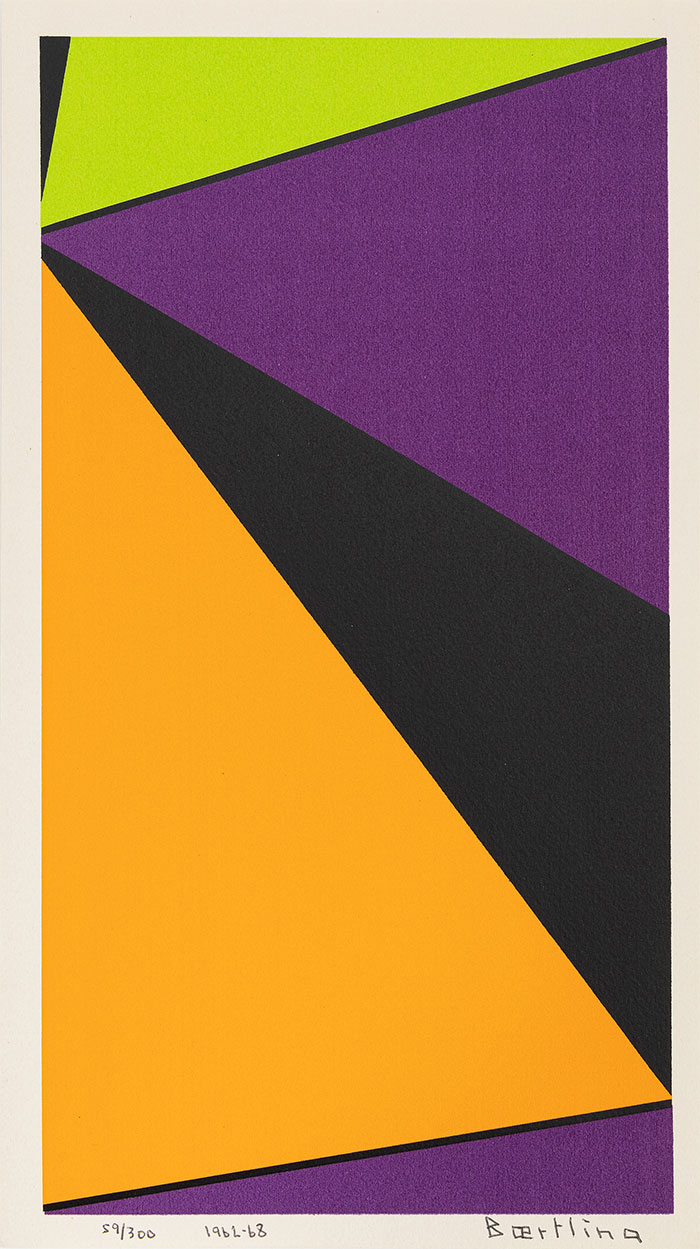Olle Baertling – Prints F296
Olle Baertling's artistry does not allow itself to be categorized in a specific -ism or artist collective in Swedish art history. He was an independent artist who found his own way both in life and in art. His first exhibition took place in Stockholm in 1949 with works in a geometric, non-figurative style. He related to his art as the scientist would to his research.
During the first years of the 1950s, he took longer and longer vacations from his banking work at the Scandinavian Bank and traveled to Paris. There, in the world center of art, he came in contact with the Salon des Réalités Nouvelles and sought out artists such as André Lhote, Fernand Léger, Victor Vasarely, Richard Mortensen and Auguste Herbin.
The latter became crucial for his continued development as an artist and in 1952 he found his open form, the open triangle with a pointed angle that expresses speed. When he placed the tip of the angled point outside of the canvas in 1956, the image became a section of a sequence of events that takes place outside our field of vision. With exhibitions all over the world from the 1950s until his death in 1981, Baertling occupies a prominent position both in Sweden and internationally.



























